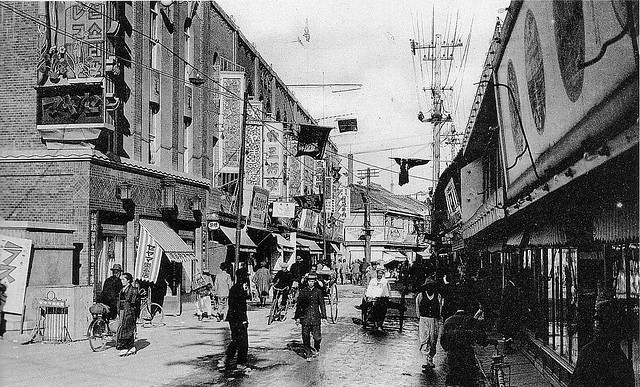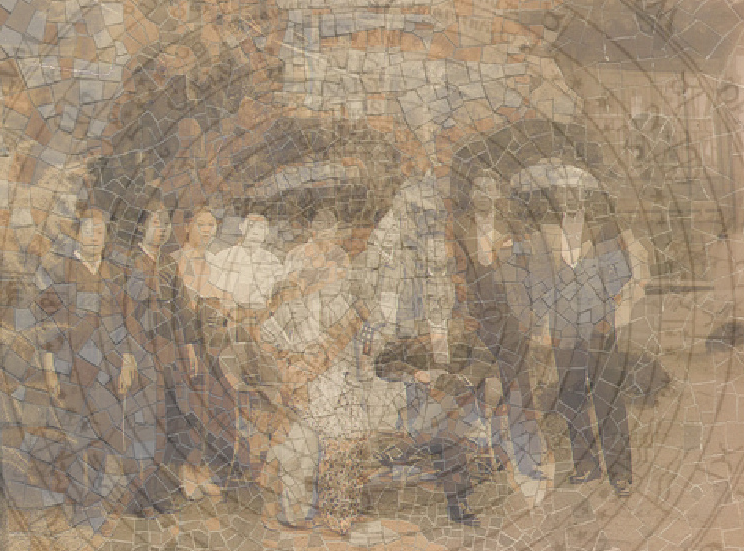Building on two of my most recent posts discussing mobile learning in Korean higher education and categorizing some of that mobile activity according to transactional distance and socialized/individualized activity, I come to you today with a post about the process of coming to know via mobile technology in Korea and how that coming to know oscillates between formal and informal spaces and activity.
Open Questions
So after writing up some of my research, I realized that some of my earlier goals of analyzing mlearning activity in formal higher education in the Humanities might be problematic for the following reasons. These are actual open questions I am working through on my thesis:
- Not sure I can discretely sequester informal and formal mobile use in the Humanities. Case in point, blogging as creation/composition. It sits outside formal university use (usually) but directly supports formal practice (often). Question: can I research an informal/formal mix focused on one element of meaning-making in the Humanities and mobile learning, ie composition?
- Related question: distinguishing between percentage of mobile and other ICT use. Same case in point: blogging. Much of this activity occurs through mobile technology, much of it does not. All of the output is deposited and circulated in mixed technology environments (blogs or other social spaces). I am not sure if I can splice out content created exclusively in mobile spaces. However, presumably this will reveal itself in the data collection/interviews. I am thinking of making this an explicit research question.
Coming to Know: Using Tools for Meaning
In this research, there is an explicit attempt to link mobile activity amongst graduate students in the Humanities in higher education in South Korea to a larger process of coming to know, a process whereby meaning is constructed through the use and mastery of a number of different tools, technological, intellectual, and physical (Saljo, 1999). Mobile activity in this context is related to making meaning in the larger context of Humanities activity, both formal and informal. It is less concerned with formalized outputs or assessment, but rather with the processes being mediated by mobile technology that generate meaning for the Humanities learner. One such example, one that has significant focus in this thesis, is composition, how composing (in text, media, dialogue, etc.) in mobile technology generates meaning. However, mobile learning as such represents one space, process, or tool in a larger environment of context (which includes sociocultural communication, technology, formalized practice, and informal modes of communication, etc.). Therefore, this the research is designed to introduce elements of that larger environment of context in terms of pedagogy and process (u-learning, elearning, smart learning, disciplinary practice), organizations (universities, research organizations), modes of communication (informal and formal), and artifacts and tools (mobile applications, environments) that in aggregation form a larger environment of content, of coming to know.

Mobile Technology Use in the Humanities in South Korea
For the Humanities, my research is looking at the use of mobile technology for graduate students for performing disciplinary activity, whether informally and formally. This disciplinary activity will be expanded upon in subsequent sections of this Literature Review, but first it is important to consider the distinctions between formal and informal use of mobile technology by graduate students in the Humanities as this oscillates repeatedly between high and low interactional states, socialized and individualized states (Park, 2011) and informal and formal states of activity.
For the purposes of this thesis, formal use of mobile technology will be defined as use that directly relates to the engagement with or completion of formalized disciplinary activities, such as information retrieval and analysis (lectures, research), knowledge construction (essay writing, multimedia creation, publishing/posting), and peer interaction (faculty/student feedback and communication, formal discussion boards, peer review, collaborative projects). This definition specifically excludes mobile use for administrative functions (scheduling, etc.). This formal activity sits within the high transactional distance categorization; yet can oscillate between socialized (discussion, peer review) and individualized (essay writing, research) categorizations. All the universities outlined have developed mobile functionality that accounts for some measure of both socialized and individualized activity, allow with high degrees of transactional distance.
Informal use of mobile technology is use that indirectly supports, or runs parallel to, the engagement with or completion of formal disciplinary activity. Informal use can be categorized as low transactional distance activity, meaning there is limited formal contact between faculty and student, and can oscillate between socialized (social media, peer discussion, informal study groups, sharing, posting, etc.) and individualized activity (data capture, media creation, reflective activities, informal writing/blogging). There are numerous mobile learning examples encompassing informal use, including social media and informal, student-designed mobile applications supporting university activity (informal study groups, language learning, mentoring and club activities, etc.). Mobile technology use for learning, it is important to note, will perpetually oscillate between these informal and formal use cases in a larger system of meaning making in the Humanities.
The vast number of informal social media mobile applications, those not specifically designed to support formal learning in the Humanities, but that can and are used to support learning precludes an exhaustive exploration of these in this thesis. The saturation of this social media, however, can be suggested as being near total for graduate students in Korean Humanities programs. South Korea has a long and complex history of social media participation and use by university students, but the cultural characteristics of that social media use reflects a particular cultural approach to engaging with social media (Kim, Sohn, Choi, 2011). Korean social networks tend to be much smaller (1/5 the size) than their American counterparts and their motivations for participation (social support, some information seeking, less casual relationships) speak to a close-knit social network that reinforces the material one (2011). Learning takes place in these mobile social networks, but it is learning being filtered through an intimate group of confidantes engineered for social support. Mobile learning in social media by Korean university students, being designed primarily for social support from an intimate group of peers, does not overtly support the completion of formal disciplinary activities, but rather reinforces the resiliency needed to complete them. As such, this thesis will focus on social media applications only when it directly relates to creation and composition, whether media or text-based.
Social Media and Blogs: Informal vs. formal composition
Blogs represent a significant portion of the composition/writing activity taking place in mobile environments among graduate students in South Korea, with over 40% of the entire Korean popular operating a blog and over 20% contributing to blog-based discussion forums, numbers that expand when focusing on the age ranges that accompany most graduate students (20-29, 30-39) (Global Web Index, 2011). One such example of a social media/blogging environment used for composition and reflection in mobile learning is CyWorld, a blogging platform/social environment which illustrates the oscillation previously discussed between individualized and socialized activity (Chun et al, 2008 & Haddon, Kim, 2007). Further examples include Daum (다음) and Tistory (티스토리, which is owned by Daum), an internet portal with a blogging environment with considerable market penetration, Naver Blogs (네이버 블로그) presents a third popular option for graduate students. All of these blogging platforms have robust mobile applications to support their use. Blogs in particular are popular with graduate students as a means of disseminating research and developing trusted social and professional networks (particularly important in the Korean context); further, they are especially efficient conduits for information to the larger community (Young & Park, 2012). Blogs presented in both Daum, Cyworld and Naver, represent an important artifact/tool in a larger process of coming to know through mobile technology, a process that involves the ability not only “to use a particular set of tools in productive ways” (Saljo, 1999) but to use those tools to engage with and disseminate research to a larger informal academic community. As such, social media composition tools, blogs in particular, must be considered together in conjunction with official university mobile offerings when analyzing creative activity in the Humanities.
So there is my dilemma. Evidence of composition is most readily available via blogs, yet it is difficult to determine the scope of mobile use within that process of composition. Further, hopefully the informal/formal interplay was evident in the above. I think ultimately those distinctions between informal and formal learning don’t matter all that much in terms of composition, but it does when one is trying to be granular enough to actually conduct the research. More to follow in subsequent posts.
References
- Chun, H., Kwak, H., Eom, Y. H., Ahn, Y. Y., Moon, S., & Jeong, H. (2008, October). Comparison of online social relations in volume vs interaction: a case study of cyworld. In Proceedings of the 8th ACM SIGCOMM conference on Internet measurement (pp. 57-70). ACM.
- Global Web Index (2011). The Global State of Social Media in 2011. Retrieved April 10, 2013 from http://www.globalwebindex.net/the-global-state-of-social-media-in-2011/.
- Haddon, L., & Kim, S. D. (2007). Mobile phones and web-based social networking-Emerging practices in Korea with Cyworld. JOURNAL-COMMUNICATIONS NETWORK, 6(1), 5.
- Kim, Y., Sohn, D., & Choi, S. M. (2011). Cultural difference in motivations for using social network sites: A comparative study of American and Korean college students. Computers in Human Behavior, 27(1), 365-372.
- Park, Y. (2011). A pedagogical framework for mobile learning: Categorizing educational applications of mobile technologies into four types. The International Review of Research in Open and Distance Learning, 12(2), 78-102.
- Saljo, R. (1999), chapter: Learning as the use of tools. Littleton, K., & Light, P. (Eds.). (1999). Learning with computers: Analysing productive interaction. Psychology Press.
